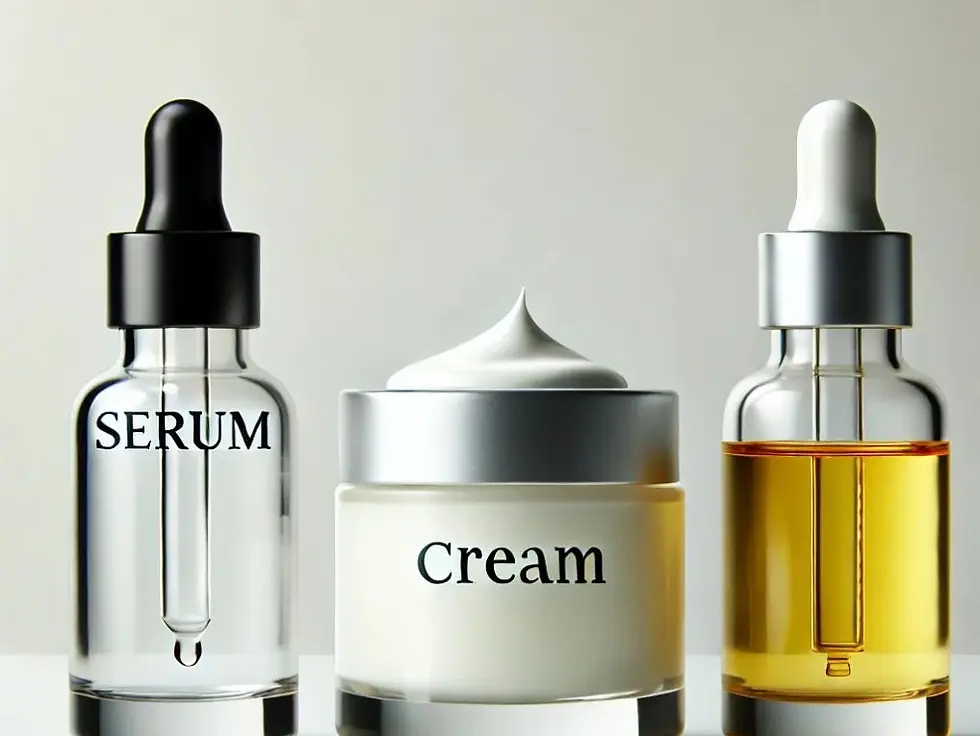Why does the skin become thinner and less elastic over time ?
- Angéline Poulouin
- Jan 10
- 2 min read
Updated: May 24
Skin aging is a natural process influenced by biological and environmental factors. As we age, the skin undergoes structural, functional, and metabolic changes that make it thinner and less elastic.
These changes are caused by a combination of intrinsic (biological aging) and extrinsic (environmental aging) factors.
Here is a detailed explanation of the mechanisms involved:
Slower Collagen Production
Collagen is an essential protein that provides structure to the skin, giving it firmness and strength.
With age: The production of collagen by fibroblasts (dermal cells) decreases by approximately 1% per year from the age of 20.
Consequences: Reduced collagen leads to thinner skin and a loss of firmness, contributing to wrinkles and sagging skin.
Decrease in Elastin
Elastin is another key protein that gives the skin its elasticity and allows it to return to its original shape after being stretched.
With age: Elastin production declines, and the remaining elastin fibers become disorganized and less functional.
Consequences: Skin loses its suppleness, becomes less elastic, and is more prone to sagging.
Reduction in Hyaluronic Acid
Hyaluronic acid is a natural molecule in the skin that acts like a sponge, retaining water and contributing to hydration and skin volume.
With age: Hyaluronic acid production decreases, reducing the skin’s ability to retain moisture.
Consequences: Skin becomes drier, less plump, and more prone to fine lines and folds.
Thinning of Skin Layers
The skin is composed of three main layers: the epidermis, dermis, and hypodermis. All three layers undergo changes with age:
The epidermis (outer layer) becomes thinner due to slower cell renewal. Keratinocytes, the primary cells of the epidermis, regenerate more slowly, making the skin more fragile.
The dermis (middle layer) loses density due to decreased collagen, elastin, and hyaluronic acid.
The hypodermis (deep layer) atrophies, with a reduction in subcutaneous fat that supports the skin.
Reduced Blood Flow
With age: Blood circulation in the skin’s capillaries slows down.
Consequences: Reduced oxygen and nutrient delivery slows cellular metabolism, impairing the skin’s ability to repair and regenerate itself.
Aggravating Environmental Factors
In addition to biological changes, external factors accelerate skin aging and exacerbate thinning and loss of elasticity:
UV exposure: UV rays damage collagen and elastin, causing premature aging (photoaging).
Smoking: It reduces skin oxygenation and accelerates the breakdown of collagen and elastin.
Pollution: It generates free radicals that damage skin cells.
Inadequate skincare: Insufficient hydration and improper products can further weaken the skin.
Hormonal Changes
In women: Menopause leads to a decrease in estrogen levels, directly impacting collagen, elastin, and hyaluronic acid production.
Consequences: Thinner, drier, and looser skin, often accompanied by increased wrinkles.
Prevention and Solutions
Although skin aging is inevitable, certain measures can slow these processes and maintain skin quality:
Sun Protection: Use broad-spectrum sunscreen to protect the skin from UV rays.
Hydration: Apply moisturizers enriched with hyaluronic acid to maintain skin hydration.
Diet: Consume antioxidant-rich foods (vitamins C and E, beta-carotene) to combat free radicals.
Dermatological Treatments: Opt for procedures like lasers, peels, or injections to stimulate collagen production.
Healthy Lifestyle: Avoid smoking, stay hydrated, and get enough sleep to allow the skin to regenerate.
Let me know if you need further clarification! 😊


.jpg)




Comments